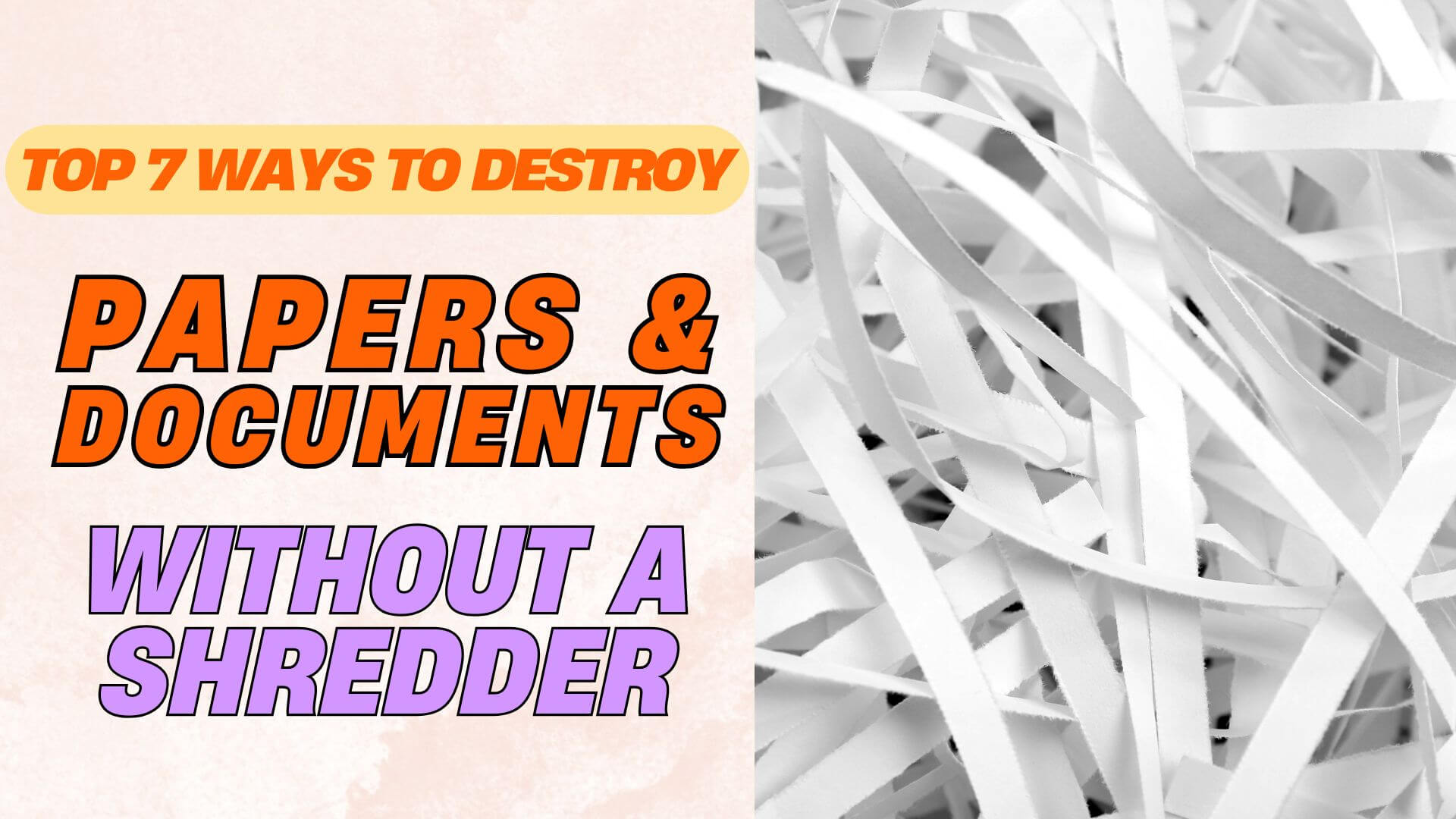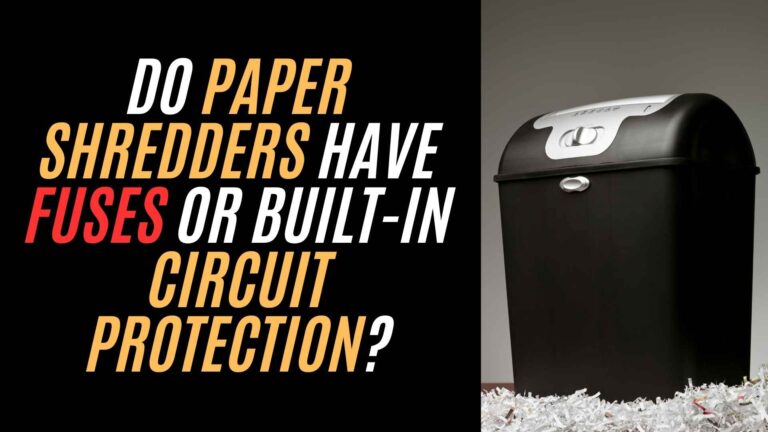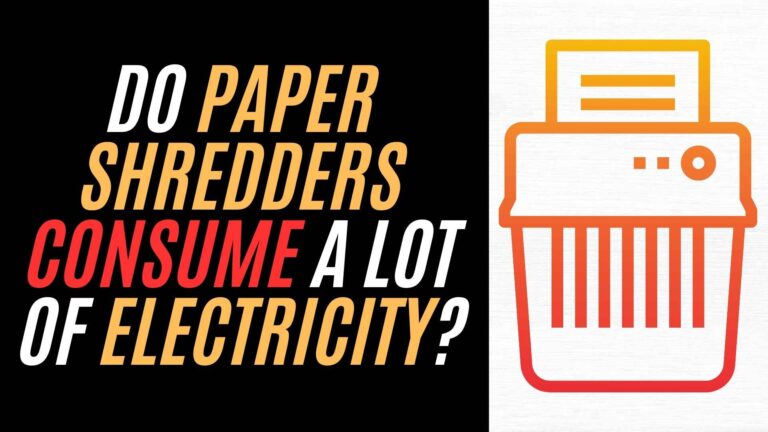In today’s world, where information is as valuable as currency, securely disposing of paper documents is more crucial than ever. It’s not just about tidying up; it’s about safeguarding personal and sensitive information from prying eyes. Imagine tossing out an old bank statement or a document with your social security number without a second thought.
The risks? Potential identity theft, financial fraud, and a host of other issues that can arise from improperly discarded papers. But what if you don’t have a shredder on hand? Don’t worry! There are several effective methods to ensure your documents are unreadable before they leave your possession.
In this guide, we’ll explore various safe and practical ways to destroy paper without the need for a shredder, helping you protect your information and the environment.
Why Proper Paper Disposal Matters
When we think about disposing of paper, it’s easy to overlook the potential consequences of improper handling. Tossing sensitive documents into the trash without proper destruction can lead to serious risks. One of the most significant dangers is identity theft. Criminals can retrieve personal information from discarded papers and use it to commit fraud, leading to financial loss and personal distress.
Additionally, businesses that fail to dispose of confidential documents properly can face legal consequences, including fines and damage to their reputation. Beyond the personal and legal risks, there’s also an environmental aspect to consider.
Improper disposal can contribute to unnecessary landfill waste and missed opportunities for recycling. By adopting secure and eco-friendly disposal methods, we not only protect ourselves but also contribute to a more sustainable planet.
DIY Methods to Destroy Paper Without a Shredder
When it comes to disposing of sensitive documents without a shredder, there are several effective DIY methods you can employ. Let’s explore each technique in detail to ensure your information remains confidential.
1. Tear by Hand

How to effectively tear paper into unrecognizable pieces.
Manually tearing paper is a straightforward method suitable for small quantities of documents. To enhance security, tear the paper into thin strips both vertically and horizontally, creating confetti-like pieces.
Ensure that critical information, such as names, addresses, or account numbers, is torn through multiple times. For added protection, consider disposing of the torn pieces in separate trash bags or mixing them with other waste materials.
Best for small amounts of paper.
This method is ideal when dealing with a limited number of documents. While it can be time-consuming for larger volumes, tearing by hand offers a quick and accessible solution for occasional disposal needs.
2. Burn the Paper
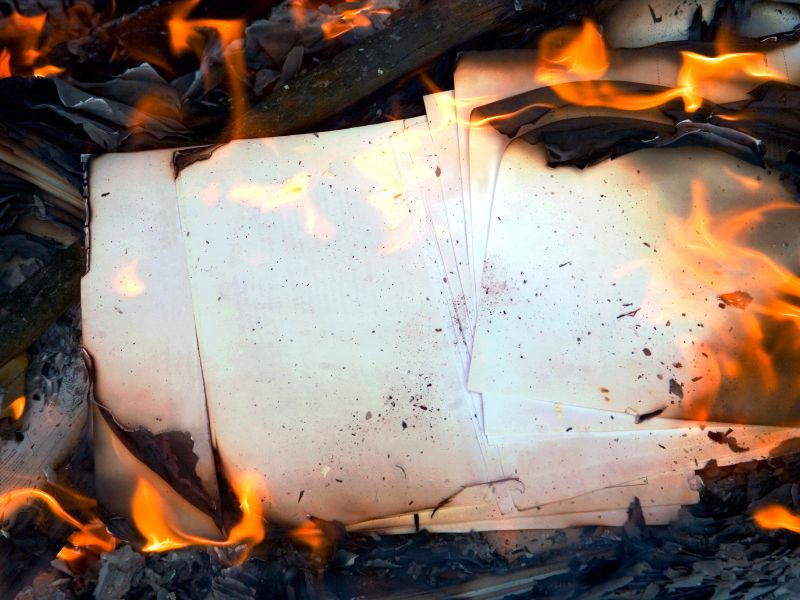
Safe burning practices at home.
Burning is an effective way to ensure complete destruction of sensitive documents. If you choose this method, use a metal container, such as a fire pit or a burn barrel, to contain the fire.
Add the paper gradually to maintain control over the flames, and always have water or a fire extinguisher nearby in case of emergencies. After burning, stir the ashes to confirm all pieces are thoroughly incinerated.
Legal considerations for burning paper in residential areas.
Before proceeding, check local regulations regarding open burning, as some areas have restrictions due to environmental concerns or fire hazards. Always prioritize safety and legality when considering this method.
3. Soak and Pulp
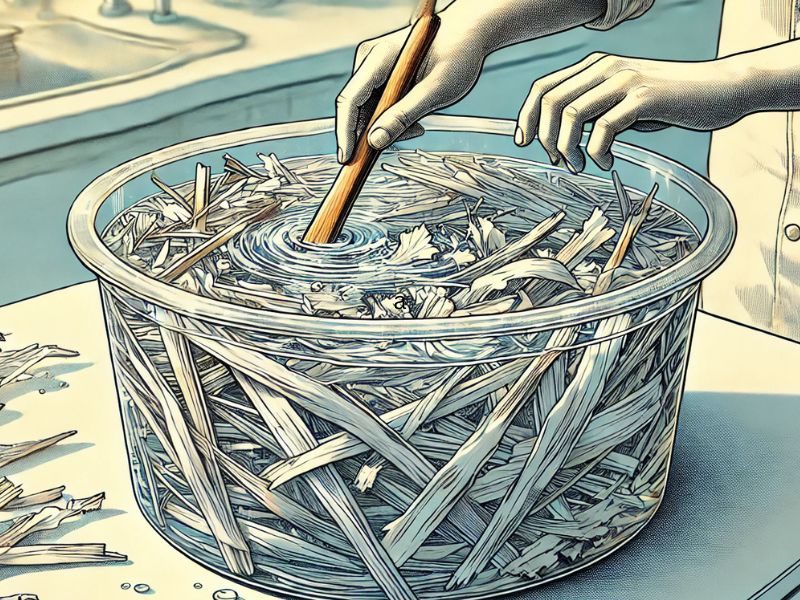
Instructions for soaking paper in water and turning it into a pulp.
Transforming paper into pulp renders it unreadable. Place the documents in a large container filled with water. Allow them to soak for 24 to 48 hours until the paper disintegrates. To expedite the process, agitate the mixture periodically or use a paint mixer attachment on a drill to break down the paper fibers. Once pulped, drain the excess water and let the pulp dry before disposal.
Environmentally friendly disposal options for the pulp.
If no chemicals were added during pulping, the dried pulp can be composted, contributing to soil enrichment. Alternatively, it can be disposed of with regular waste, though composting is the more eco-friendly option.
4. Use a Blender

Turning paper into mush with a blender.
For a quicker pulping process, use an old or inexpensive blender. Tear the paper into smaller pieces and place them in the blender with water. Blend until the mixture reaches a mushy consistency. This method is efficient but may not be suitable for large volumes of paper.
Step-by-step guide and cleaning tips.
- Tear documents into small pieces.
- Fill the blender halfway with water.
- Add the paper pieces.
- Blend until a pulp forms.
- Pour out the pulp and let it dry before disposal.
After use, clean the blender thoroughly to prevent paper residue from clogging the blades.
5. Composting (Eco-Friendly Option)

Adding paper to compost bins.
Paper can serve as a valuable carbon source in compost bins. Shred or tear the paper into small pieces to facilitate decomposition and mix it thoroughly with nitrogen-rich materials like food scraps or grass clippings. Maintain a balanced compost pile by ensuring an appropriate carbon-to-nitrogen ratio.
Best types of paper for composting (e.g., no glossy or laminated).
Only compost plain, non-glossy paper. Avoid glossy, laminated, or colored papers, as they may contain inks or coatings harmful to the composting process.
6. Scissors or Guillotine Cutter

Manually cutting paper into tiny pieces.
Using scissors or a guillotine cutter allows for precise cutting of documents into small, unreadable pieces. Focus on sections containing sensitive information, ensuring they are thoroughly destroyed.
Tools and techniques to speed up the process.
Multi-blade scissors can expedite the cutting process by creating multiple cuts simultaneously. A guillotine cutter provides straight cuts and can handle multiple sheets at once, increasing efficiency.
7. Chemical Dissolution

Dissolving paper with safe household chemicals (e.g., vinegar or bleach).
Soaking paper in a solution of water and household bleach accelerates the breakdown of paper fibers. Place the documents in a plastic container, add water and a small amount of bleach, and let them sit until the paper disintegrates into a pulp. Stir occasionally to facilitate the process.
Safety precautions for handling chemicals.
Always wear gloves and work in a well-ventilated area when handling bleach or other chemicals. Ensure the container used can withstand chemical exposure, and dispose of the resulting mixture in accordance with local regulations to prevent environmental harm.
Ensuring the secure and environmentally friendly disposal of paper documents is essential for both personal security and ecological responsibility. Let’s delve into best practices, environmental considerations, and common pitfalls to avoid.
Best Practices for Paper Disposal
Combining Methods for Added Security
For heightened security, especially with sensitive information, consider combining disposal methods. For instance, after tearing documents by hand, you can soak the pieces in water to further degrade the paper fibers, making reconstruction virtually impossible. This dual approach adds an extra layer of protection against potential data breaches.
Recommendations for Specific Situations
- Small Quantities: For minimal amounts of paper, manual tearing followed by soaking is effective and straightforward.
- Bulk Paper: When dealing with larger volumes, methods like pulping or composting become more practical. Pulping involves mixing paper with water to create a mushy substance, which can then be safely disposed of or composted. Composting not only disposes of the paper securely but also benefits the environment by enriching the soil.
Environmental Considerations
Recycling Paper Properly
Recycling is a key component of eco-friendly paper disposal. After ensuring that sensitive information is destroyed, the remaining paper can be recycled. Recycling paper reduces greenhouse gas emissions, saves energy, and conserves natural resources. It’s important to follow local recycling guidelines to ensure proper processing.
Benefits of Composting
Composting paper is an excellent way to reduce waste and contribute to soil health. Paper adds carbon-rich material to compost, balancing nitrogen-rich organic waste like food scraps. This process diverts paper from landfills, where it would otherwise produce methane, a potent greenhouse gas. By composting, you’re turning waste into a valuable resource for your garden.
Common Mistakes to Avoid
Burning Improperly or Without Permits
While burning paper can be an effective disposal method, it’s crucial to do so safely and legally. Many areas have regulations against open burning due to environmental and safety concerns. Always check local laws and obtain necessary permits before burning paper. Improper burning can lead to fines and contribute to air pollution.
Failing to Adequately Destroy Sensitive Information
Simply discarding documents without proper destruction can lead to data breaches. Ensure that all personal or sensitive information is thoroughly destroyed using methods like shredding, pulping, or a combination of techniques to prevent unauthorized access.
Using Harmful Chemicals Unsafely
Some methods suggest using chemicals to dissolve paper. However, this can be hazardous if not done correctly. Avoid using harsh chemicals that can harm you or the environment. If you choose chemical methods, opt for safe, non-toxic substances and follow all safety guidelines.
Alternatives to Manual Destruction
When it comes to disposing of sensitive documents without manual effort, there are several efficient and budget-friendly options to consider.
Affordable Shredder Alternatives
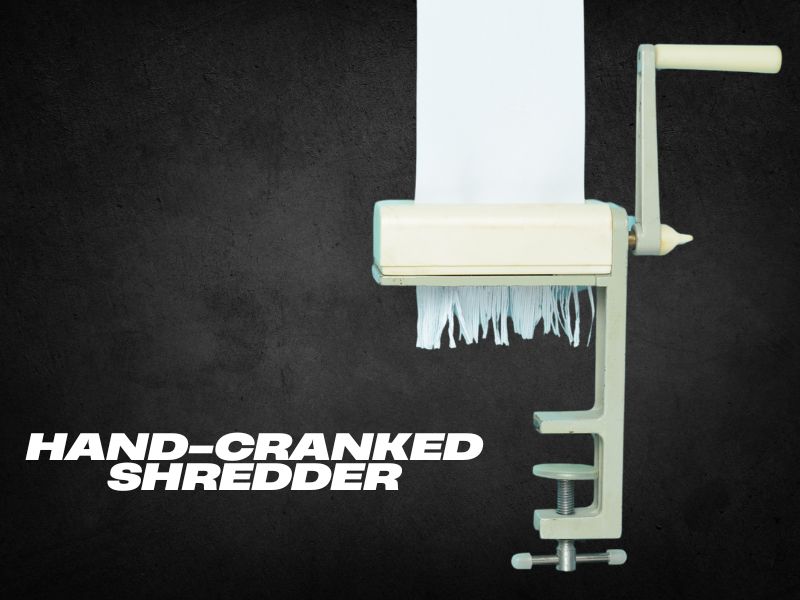
If purchasing a traditional electric shredder isn’t feasible, here are some cost-effective alternatives:
- Hand-Cranked Shredders: These manual devices require no electricity and are suitable for small volumes of paper. They can be found online or at office supply stores at reasonable prices.
- Community Shredding Events: Many communities offer free or low-cost shredding events where residents can bring documents for secure destruction. This is an excellent way to dispose of papers without investing in personal equipment.
Professional Shredding Services
For larger volumes of documents or when security is paramount, outsourcing to professional shredding services can be advantageous.
- Cost-Effectiveness: Professional services often charge per box or per pound, making them economical for bulk shredding needs.
- Security Assurance: These companies follow strict protocols to ensure confidential information is thoroughly destroyed, providing peace of mind.
- Convenience: Many services offer on-site shredding or scheduled pickups, adding convenience for businesses and individuals alike.
By exploring these alternatives, you can choose a method that aligns with your budget and security requirements.
Conclusion
In this guide, we’ve explored various methods for securely disposing of paper without a shredder, including manual techniques, eco-friendly options, and professional services. Each method offers unique benefits, so consider your specific needs—such as volume of paper, sensitivity of information, and environmental impact—when choosing the best disposal strategy. Have a favorite method or tip? Share it in the comments!
Frequently Asked Questions
Is burning paper a safe disposal method?
Burning paper can effectively destroy documents, but it’s essential to follow local regulations and safety guidelines. Always check with local authorities before burning paper to ensure compliance with laws and to prevent environmental hazards.
Can all types of paper be composted?
Most plain paper can be composted, but it’s best to avoid glossy, laminated, or heavily inked papers, as they may contain materials that are not biodegradable or could harm the composting process.
How do professional shredding services ensure confidentiality?
Professional shredding services adhere to strict protocols, including secure handling, transportation, and destruction of documents. Many provide certificates of destruction for added assurance.
Are hand-cranked shredders effective for large volumes of paper?
Hand-cranked shredders are best suited for small quantities of paper due to their manual operation. For larger volumes, electric shredders or professional services are more efficient.
What are the environmental benefits of shredding and recycling paper?
Shredding and recycling paper reduce the amount of waste sent to landfills, conserve natural resources, and decrease greenhouse gas emissions, contributing to environmental sustainability.
